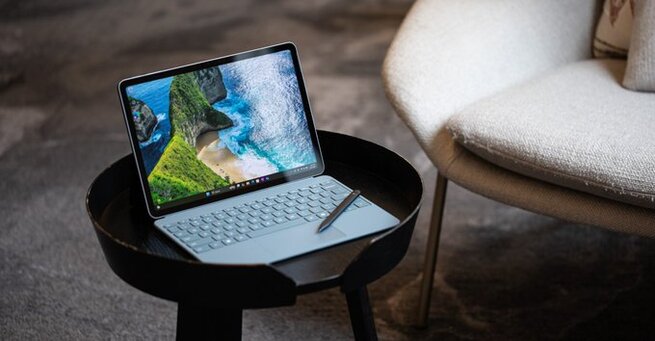Alerts

Microsoft is reportedly moving its Surface manufacturing out of China as global trade tensions with the US continue to escalate. According to a Nikkei report, the company plans to shift production of its Surface laptops, tablets, and data center servers outside China starting as early as 2026.
This strategic move marks a major step in Microsoft’s effort to diversify its supply chain, reducing its dependence on Chinese manufacturing as geopolitical risks rise.
The report suggests that Microsoft’s relocation plans go beyond just final assembly. The company is expected to move component sourcing, parts production, and assembly operations for upcoming Surface devices and server hardware.
Some of Microsoft’s existing server production has reportedly already shifted outside of China, with the company also aiming to manufacture more Xbox consoles in other countries. This broader strategy mirrors the diversification efforts seen across the tech industry, including Apple and HP.
The decision comes amid escalating US-China trade tensions, which have intensified throughout 2025. Recently, President Trump threatened to impose a 100% tariff on Chinese goods and expand export controls targeting software and technology products.
In retaliation, both nations have introduced new port fees on each other’s shipments, while Beijing tightened export rules on rare earth materials, critical for semiconductor and electronics production.
These rising trade barriers have pressured global tech giants like Microsoft to secure more stable, politically neutral manufacturing bases.
While Microsoft hasn’t officially confirmed where its new production lines will be based, reports suggest Vietnam, Thailand, and Mexico are among the likely candidates. These countries have become popular manufacturing alternatives for Western tech firms due to lower tariffs, skilled labor, and improving infrastructure.
By relocating its Surface and server production, Microsoft is joining a growing trend of “China plus one” strategies—maintaining limited operations in China while expanding elsewhere.
Moving manufacturing out of China could reshape how quickly and cost-effectively Microsoft can produce new Surface devices. In the long run, this may also help the company reduce risks tied to geopolitical instability and improve supply chain resilience.
However, experts warn that transitioning high-tech manufacturing infrastructure isn’t simple—it involves years of planning, vendor partnerships, and capital investment. Still, Microsoft’s proactive approach could position it better for a volatile global market.
Microsoft’s move to shift Surface manufacturing out of China highlights a broader realignment in global tech production. As trade tensions grow and supply chain risks increase, companies like Microsoft are racing to de-risk their operations and future-proof their hardware business.
The next few years will reveal whether this transition strengthens Microsoft’s hardware strategy—or introduces new logistical challenges as it builds a more globally distributed production network.
𝗦𝗲𝗺𝗮𝘀𝗼𝗰𝗶𝗮𝗹 𝗶𝘀 𝘄𝗵𝗲𝗿𝗲 𝗿𝗲𝗮𝗹 𝗽𝗲𝗼𝗽𝗹𝗲 𝗰𝗼𝗻𝗻𝗲𝗰𝘁, 𝗴𝗿𝗼𝘄, 𝗮𝗻𝗱 𝗯𝗲𝗹𝗼𝗻𝗴. We’re more than just a social platform — from jobs and blogs to events and daily chats, we bring people and ideas together in one simple, meaningful space.